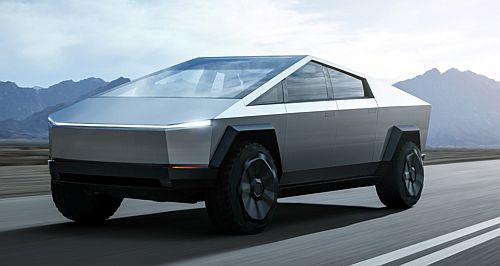Make / Model Search
News - Market Insight - Market Insight 2023Market Insight: Aus at BEV ‘tipping point’Australia joins nations that passed BEV sales threshold where adoption accelerates4 Sep 2023 AUSTRALIAN battery-electric vehicle sales have just passed a critical point that can slingshot us onto a rapid EV mass adoption trajectory.
US news agency Bloomberg Green has reported that a 5 per cent market share for any given product represents the threshold of mass adoption, where technology preferences rapidly flip as historically seen in products such as microwave ovens.
Once it reaches 5 per cent, product sales can quickly jump to 25 per cent, the report said.
BEV sales in Australia, at the end of July, was 7.7 per cent of the entire passenger car, SUV and light-commercial vehicle (LCV) market.
This is despite the LCV market being virtually untapped due to limited product availability of EVs.
In the first seven months of this year, only 97 BEV LCVs were sold. That is changing slowly with a few high-priced e-vans available now and only one BEV ute, the LDV eT60 also high priced. Some specialist conversion companies build BEV utes based on ICE models, again at a high price.
These include the recently launched Zero Automotive ute (based on a Toyota 79-Series) and the Roev EV utes which are retrofitted Toyota HiLuxes.
The 5 per cent market share tipping point for pure electric (largely passenger) vehicles has now been reached in 23 countries, according to Bloomberg Green. Other countries it identified as recently passing this point include Canada, Spain, Thailand and Hungary (which joins most of Western Europe), China and the US.
It is a significant change from just a year ago when the 5 per cent adoption point had been reached in 19 countries.
The publication said in its report that convincing everyone to adopt a new technology can be difficult at first, citing the microwave oven scenario that took two decades of lukewarm sales to reach just a tenth of US households.
However, by the 1980s, microwaves had spread to nearly every kitchen.
With a much shorter lead time, much of the world is apparently now entering the fast part of the technology adoption curve with pure electric vehicles, says Bloomberg Green.
According to predictors, once 5 per cent is reached the adoption trajectory (for BEVs) can surge to 25 per cent of new cars in four years.
It is driven by what is called the “S-shaped adoption curve” that applies to most new consumer products such as televisions, mobile phones, LED lights and countless other products. Sales start out slowly as early adopters commit, then once the 5 per cent point is reached, the sales floodgates open and the product goes “mainstream.”
Bloomberg Green says in the case of full-electric vehicles, 5 per cent seems to be the inflection point. “The time it takes to get to that level varies widely by country, but once the universal challenges of car price, charger availability and driver scepticism is solved for the few, the masses soon follow,” the report detailed.
“The US passed 5 per cent in late 2021, but has ramped up since even allowing for the fact that Americans spend more time in their cars than any other populace, there is a preponderance of light commercial vehicles and drivers demanded longer ranges than early EV models offered.”
Something similar applies in Australia on all three counts.
It then follows that with greater availability of electric utes and off-road SUVs, overall BEV sales may continue to increase exponentially into the near future.
Potential sticking points for utility vehicles (utes) and large off-road capable SUVs being addressed by manufacturers are affordability, range, towing ability, reliability, ease of recharge, weight, and payload.
Utes and large SUVs make up a large proportion of new vehicle sales in both countries and in BEV form, both vehicle types have massive battery needs which has slowed their development and availability to the buying public.
But new battery powered and “electrified” utility models are beginning to filter through as technology improves and development and production accelerates.
Tesla, the world’s biggest BEV maker could precipitate a spike in BEV uptake with its forthcoming Cybertruck, due soon, followed by other electrified mainstream American offroad and pick-up truck icons including Chevy Blazer and Silverado, Ford Explorer and F150, Jeep Wrangler, and Ram 1500.
Bloomberg Green says the next tipping point on the horizon may be India, the third biggest global car market behind China and the US and currently sitting on 3 per cent BEV new car sales, double the sales rate of six months earlier.
And what happens overseas has a direct impact on what happens here as Australian buyers are no doubt ready for electric or electrified utility vehicles exemplified in the appearance this week of Toyota’s fully electric Revo ute concept and a swag of specialist EV conversion companies turning ICE powered models into EVs.
Based on the Bloomberg Green report, when utes start to arrive in Australia in large numbers, and more affordable fully electric Chinese passenger vehicles become available, BEV mass adoption rate can spike dramatically.  |
Click to shareMarket Insight articlesResearch Market Insight Motor industry news |









Facebook Twitter Instagram